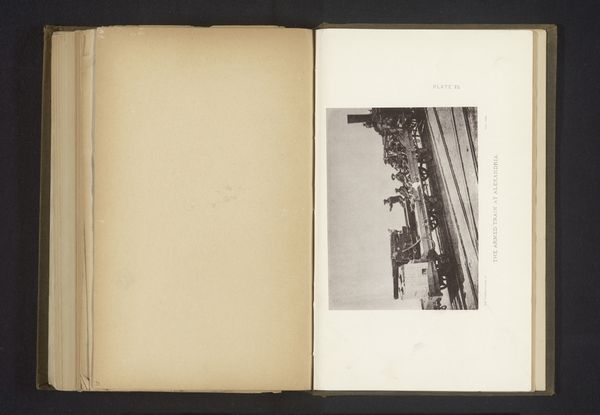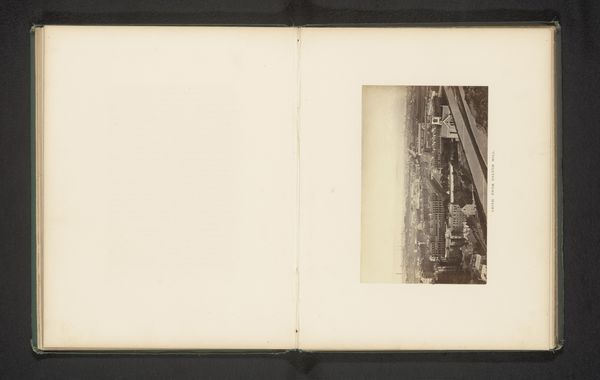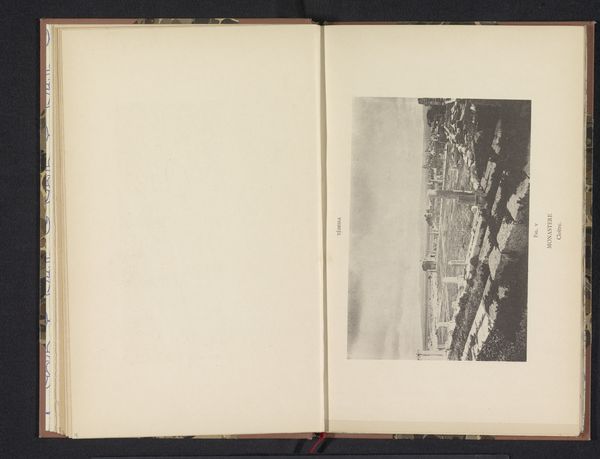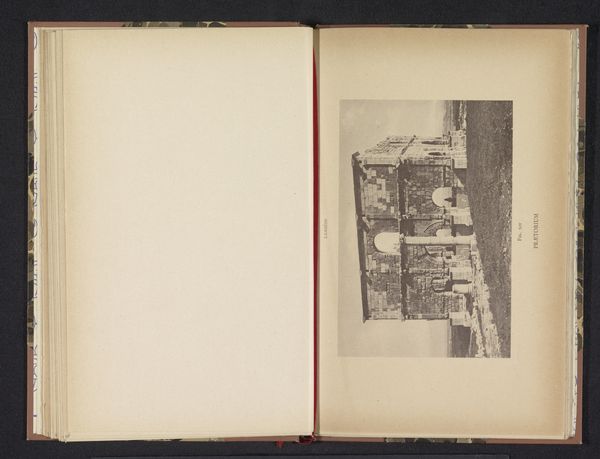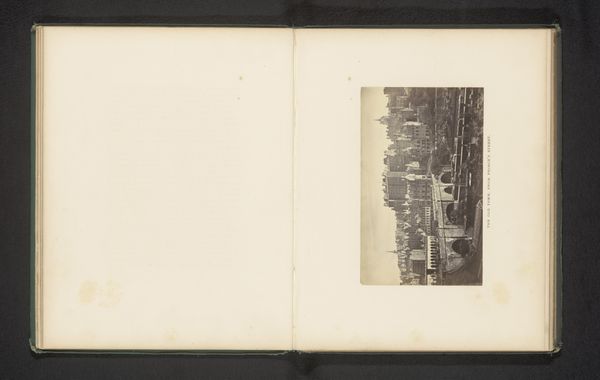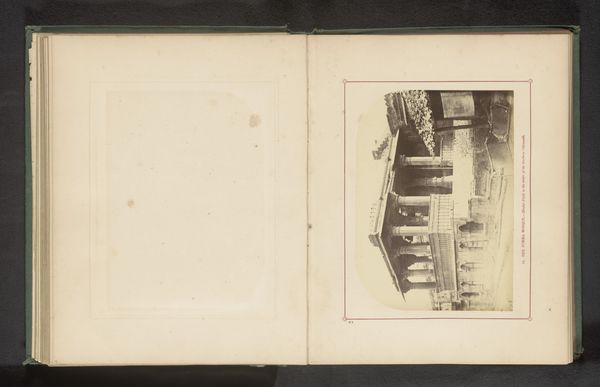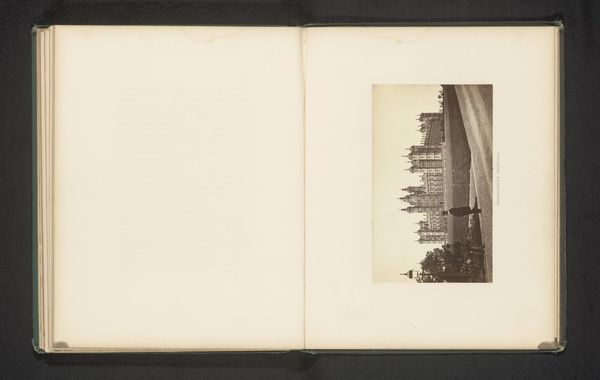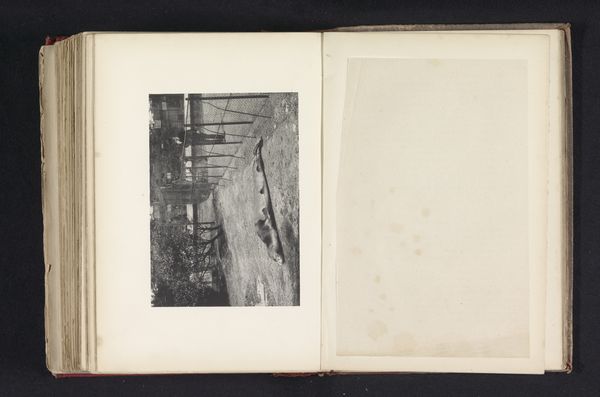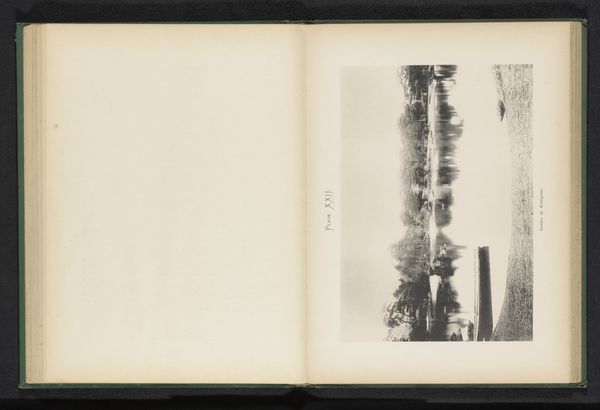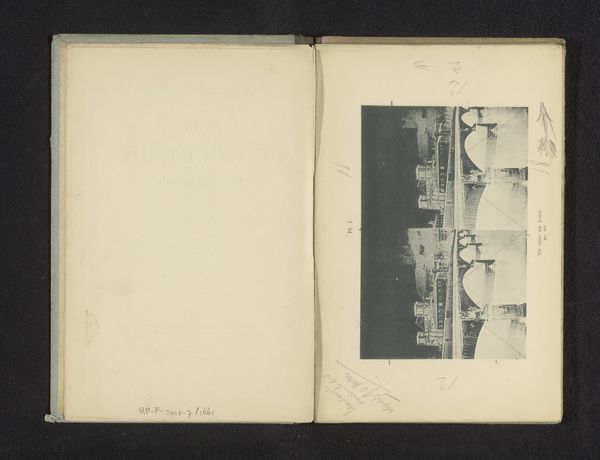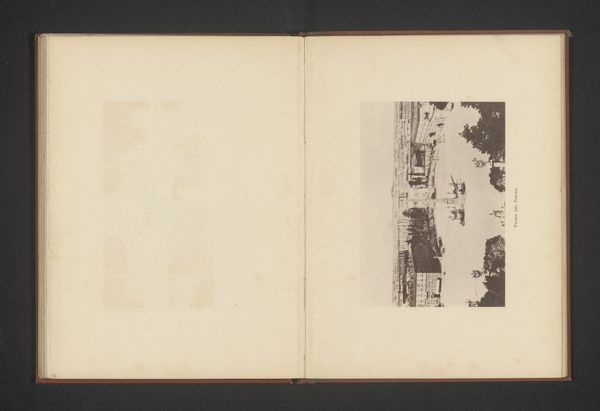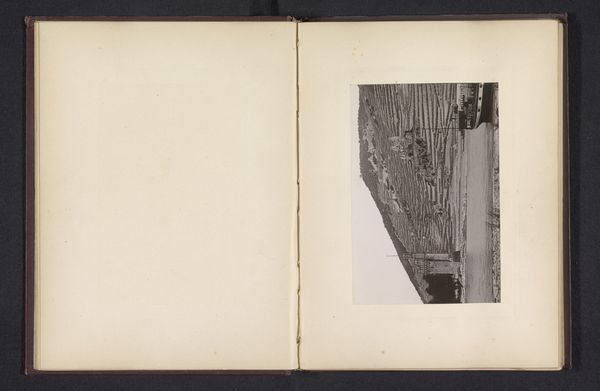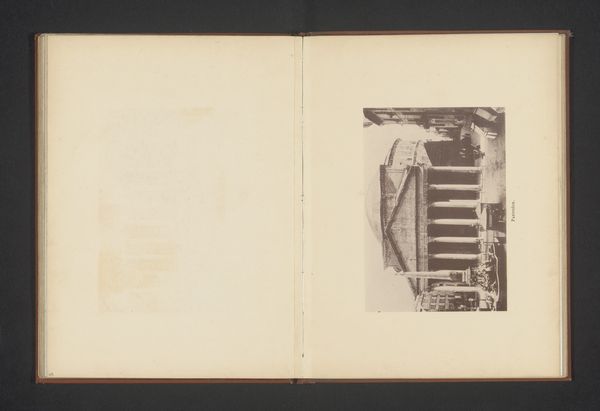
print, photography
# print
#
landscape
#
photography
#
coloured pencil
#
ancient-mediterranean
Dimensions: height 112 mm, width 158 mm
Copyright: Rijks Museum: Open Domain
Curator: Here we have a photographic print titled “Gezicht op de Romeinse ruïnes van een tribune en een tempel in Timgad,” dating from before 1894 and attributed to an anonymous creator. Editor: It's a bleak but stately image; the contrast feels almost intentionally flattened, which makes the surviving architectural forms all the more assertive. Curator: Interesting, the way you perceive assertiveness through flattening! Considering the social context, photographic prints like these served to document and disseminate colonial endeavors. How were these architectural wonders integrated into or manipulated to serve such ideological production? Editor: Certainly, that reading has merit. But visually, what I observe is that the composition leads your eye along a stark, linear perspective, exaggerating depth and emphasizing the geometric relationships between the ruins. The print-making here seems more a celebration of line than a testament of colonial power. Curator: Perhaps. However, let's consider the materiality: the printing process itself, likely involving a collodion or albumen print, speaks to specific industrial techniques and labor practices. We might ask about the hands involved in creating and distributing these images and their working conditions. How does understanding such background shape our perception? Editor: Well, by acknowledging the processes behind the creation and distribution we've just laid bare our differing approaches, as mine is rooted simply in aesthetic values. My response pivots on structure: How do those ruined columns punctuate space and create this affecting experience of timelessness? How are visual rhymes produced? The material reality only mediates these considerations. Curator: I agree there are questions of visual interest. But understanding the work involved – extracting materials for paper, mixing chemical emulsions, not to mention the subject labor – invites reflection on human cost of image creation. Editor: You’ve led us down a useful, thought-provoking road by directing us towards these considerations! I find myself returning to my initial impression now informed by a refreshed perspective on labor, legacy, and loss. Curator: As do I— I still come back to questions about what it all cost to frame the shot. And how to represent it. A rewarding process, no?
Comments
No comments
Be the first to comment and join the conversation on the ultimate creative platform.
